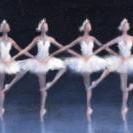
Artdreamer77
Members-
Posts
24 -
Joined
-
Last visited
-
Days Won
1
Artdreamer77 last won the day on July 9 2024
Artdreamer77 had the most liked content!
About Artdreamer77

Profile Information
-
Biography
I am a beginning composer who mostly writes piano solos for now, but I hope to eventually write in the style inspired by orchestral video game music.
-
Gender
Male
-
Instruments Played
Piano, Trombone
Recent Profile Visitors
671 profile views
Artdreamer77's Achievements
-
Artdreamer77 started following Why different keys have different emotions , two soft pieces , . and 3 others
-
This is good. Simple but refreshing. This is today's inspiration for me.
- 2 replies
-
- originals
- pleasant to the ear
-
(and 4 more)
Tagged with:
-
Is my computer not displaying something, or is this post literally just "."? How is this allowed, and how is it offensive to call this spam? EDIT: No actually, is this sarcasm or do I not see something?
-
Yes, it is true that realizing a vision is a process of discovery that may not end up entirely where you imagined, but this passage in the book made me question my own way of looking at it. I think I will read through the book just to get some fundamentals about form and who knows what else, but I understand this book is just one composer's take and I will by no means use that as my only source of learning.
-
I recently bought Fundamentals of Musical Composition by Arnold Schoenberg and I am excited to be reading it as it is the first real reading I am doing on musical composition. In the first chapter he writes the following: "A composer does not, of course, add bit by bit, as a child does in building with wooden blocks. He conceives the entire composition as a spontaneous vision. Then he proceeds, like Michelangelo who chiselled his Moses out of the marble without sketches, complete in every detail, thus directly forming his material. "No beginner is capable of envisaging a composition in its entirety; hence he must proceed gradually, from the simpler to the more complex. Simplified practice forms, which do not always correspond to art forms, help a student acquire a sense of form and a knowledge of the essentials of construction. It will be useful to start by building musical blocks and connecting them intelligently." My question is how a composer can in their vision of the composition, imagine the entirety of the form before composing even a single motive. Sure, before beginning a composition, the composer feels the ineffable essence of what they wish to express in their composition, but the form is part of that too? I was surprised to read that a composer does not add bit by bit, since it seems natural to compose by writing a theme, and then a contrasting one. I have not, though, had much success doing so, so I guess I must begin small and internalize form as a begin composing small forms for practice. I may be misunderstanding something, but reading this seemed like a reality check that I was thinking of form wrong as a composer. Or maybe this "spontaneous vision" of the form is something only the greatest of the great composers can master. I don't know; I'm a beginner.
-
Part writing for more than 4 voices
Artdreamer77 replied to Artdreamer77's topic in Advice and Techniques
Thank you, this is nice to know. I have very little experience voice leading and when I started this topic I was only looking at parallels from the perspective of voice independence. Because of this, I assumed parallel octaves were worse than parallel fifths because parallel octaves sound like a doubling, which destroys voice independence completely. I guess the two voices sounding like one is the very reason parallel octaves aren't as disruptive as parallel fifths. -
Thanks for all your guy's advice. I will probably rewrite the entire piece (when I feel like it). I might even just take part of it and work from there, adding contrasting sections. I think the piece has two main melodic ideas, but they don't contrast enough to feel like two ideas, not within the context of a single piece. I might write two pieces from this for that reason. I'm not in a hurry to rewrite this. I mostly compose whatever and whenever I want to, so I might compose a few other pieces before getting back to this. Again, thanks.
- 7 replies
-
- sad
- piano solo
-
(and 1 more)
Tagged with:
-
Part writing for more than 4 voices
Artdreamer77 replied to Artdreamer77's topic in Advice and Techniques
@AngelCityOutlawThanks for replying. What's funny is that I've already seen this video a while ago, but it was more of just watching random composition videos before I was seriously into composition, so I don't remember much. Thank you. -
@Rich Thanks for the suggestions. I'll try to add more variation and come up with more distinct ideas.
- 7 replies
-
- sad
- piano solo
-
(and 1 more)
Tagged with:
-
I've stitched together a few melodies I've come up with while improvising the last two days. I'll notate the next version in musescore and produce the audio in FL Studio, but this is basically just a quick rough draft. I don't have a title yet and I'm not set on the final structure so feel free to give suggestions. I also want to make the left hand more flowy in some places, but without clashing with the melody. https://flat.io/score/66929dc1b395c51c02ac86cf-my-music-score?sharingKey=98cac817028336424b11d90cc66fa77cd45d5e30e50203c06577a8bc91100bb9750be725c131fc4335ff3112b110adb3639cee49094807e58474a443e83f5148
- 7 replies
-
- 1
-

-
- sad
- piano solo
-
(and 1 more)
Tagged with:
-
Why different keys have different emotions
Artdreamer77 replied to Artdreamer77's topic in Composers' Headquarters
Yes, I do feel like the "height" creates a lot of the feeling. If I try to come up with a melody by singing, it will feel different if it is in my comfortable singing range than if it is a little higher and it will feel different based on how much higher it is. Maybe the best strategy is to just compose the piece in whatever key it is when the melody first comes to your head. Although some pieces start in another way, such as improvisation. But it can still be worth singing it throughout the day until you find the range that makes sense. I think range affects emotion more than the key, because two pieces can be in two different keys and have the same range. However, cadences are still somewhat tied down. This actually leads me to another conclusion: the average range, cadences, and "peaks" of the melody can all be in different places, vertically speaking, each contributing something to the melody's feeling. Anyway, thanks to @Jqh73o and @Luis Hernández for responding. -
People seem to think that different keys have different emotions. Others think it's all pseudoscience. Why do you think certain keys have certain emotions? Those who don't believe different keys have different emotions say that emotion comes from intervals, which is true. In 12TET, intervals stay the same in any key, so what is it about the pitch that changes the emotion? I know that moving a song to a different key will give it a different feeling (though I wouldn't say "emotion") based on how high or low it is, but do certain keys truly consistently have certain feelings, or is it just how high the melody notes are? Is there a system, like it feeling darker if there's more flats and brighter if there's more sharps or is it simply based on observations made by composers? If you don't have a full answer, go ahead and post your favorite keys and what emotions you think they give.
-
Nice. It reminds me of EDM, which I used to listen a lot. But it's interesting hearing it on a site where most music is neoclassical.
-
How do I compose faster?
Artdreamer77 replied to latebeethoven_addict's topic in Composers' Headquarters
@latebeethoven_addict said quantity was also important and @AngelCityOutlaw responded that it really isn't. I (and many others) say that in anything, quantity is important because it helps quality improve. I suggest occasionally composing something small (like a 16 measure piano solo) so you can get practice in a lot of different things, but for that, you still need to find time to actually compose. You can also do specific composition exercises, like composing in rondo form to practice creating contrast between sections, or composing theme and variations to practice different ways to practice creating different realizations of a single musical idea. As of increasing your output (because I'm sure you won't be releasing 16 bar exercises), don't try to compose high above your current level. I'm not saying to abandon that piano trio, because I don't know you, but keep in mind that you should work your way up in skill. Someone who's never composed anything can try to write a symphony, but if they want it to be quality, they will spend their entire life trying to learn the skills they need for that when they could have just worked their way up. -
Part writing for more than 4 voices
Artdreamer77 replied to Artdreamer77's topic in Advice and Techniques
I hope I won't be the only one to reply to my own post, but my 6th question was if there are any existing systems for voice leading in more than four parts. Perhaps I'm taking this too seriously, but I want to propose a few "rules" for voice leading in 5 and 6 voices. Obvious things like ranges are the same. I tried voice leading in 5 voices and it isn't easier. I'm not good at voice leading either way, maybe I should abandon trying to do it classically. Five voices: 1. Use the same doubling rules as you would in 4 part harmony. However it is more flexible. For example, you can voice a I chord with two roots, two fifths, and one third, or three roots, one fifth, and one third. 2. Prioritize avoiding parallel octaves and unisons over avoiding parallel fifths. Avoid parallel fifths if you can, but know they will be more common and harder to avoid than in four part harmony. At any given chord change, there should never be more than one set of parallel fifths. The same two voices should never have parallel fifths two chord changes in a row. Avoiding parallel octaves and unisons means doubled notes cannot resolve the same way. If a note is tripled (I'm sure it will be unavoidable sooner or later), all three of them have to resolve differently. Two of them have to be resolved in opposite directions and one of them will have to leap to a note that is not one of the notes the other two resolved to (the leap has to be in the highest or lowest voice, of course). 3. This is not a rule, but an observation. Unisons (notes shared by two voices) will be more common because there are more notes in the same amount of space. Parallel unisons are to be avoided as they harm voice independence more (I think) than parallel octaves. I haven't tried voice leading in 6 voices, and maybe no one needs this, but I'm extrapolating a bit. Six voices: 1. I think the most effective doubling for a triad is either three of one note, two of another, and one of the one that wants to resolve a certain direction the most (usually the third as we all know). Maybe you can double each note, but good luck resolving them all independently. Seriously, I wouldn't use six voice part writing unless almost all my chords had upper chord extensions. Jazz composers probably have their own voice leading system figured out, though. 2. Chances are parallel octaves will be unavoidable at times with so many voices (especially with triads), like how parallel fifths are hard to avoid in five part voice leading. I would apply the same restrictions that I applied on parallel fifths in five part voice leading to parallel octaves here: At any given chord change, there should never be more than one set of parallel octaves. The same two voices should never have parallel octaves two chord changes in a row. Maybe it can be a rule that parallel octaves are allowed in this case, but parallel unisons are not. I still think parallel unisons harm voice independence more than parallel octaves do. Overall, I don't think I'll ever use six part voice leading and I'm probably approaching this whole thing wrong, but I had to write down what came to mind as I was overthinking this in my free time. Now I can stop wasting my time and mental energy. Since the kind of music I want to write is video game style music, I probably don't need classical voice leading knowledge beyond the basics. If I am looking at everything wrong, help would be appreciated.




.thumb.png.8b5b433a341551e913a34392660bc95b.png)

